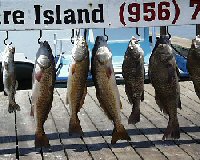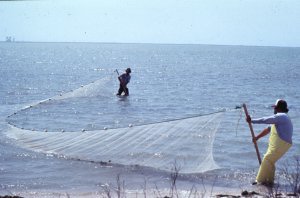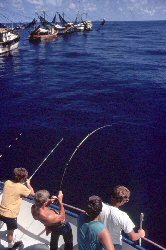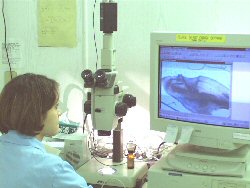Coastal Fisheries Division: Ready, Willing and Able
Hal Osburn – Former Coastal Fisheries Director
To say I'm proud of the Coastal Fisheries Division of the Texas Parks and Wildlife Department would be an extreme understatement! Of course, I could be biased, given that I've spent my entire professional life as a member of the Division. I started as a Fish and Wildlife Technician at the Seabrook Marine Lab in 1975 after completing my Master of Science degree in marine biology from Texas A&M. Before moving to the Austin Headquarters, I spent 13 years as a biologist at the Rockport Marine Lab.
Now, let me back up my proud sentiments for this Division with some hard data! When I was hired in 1975, I was one of several dozen biologists hired to start the new scientifically-based resource and harvest monitoring programs authorized by the Texas Legislature. The statistically-valid data from those programs provided justification for the monumental 1981 legislative decision to allocate red drum and spotted seatrout solely to recreational fishermen.

Having achieved that success, many states might have been tempted to scale back on their coastal sampling efforts. But for Texas, it was only the beginning! Not only were the monitoring programs continued, they were expanded to investigate nearly all of the important finfish and shellfish in both the bays and the Gulf. Special studies were initiated to fill in critical data gaps and increase the efficiency of the monitoring programs. The Perry R. Bass Marine Fisheries Research Station (PRBMFRS) was filled with scientists and equipment intent on deciphering the secrets of reproduction, growth, genetics, and other life history facts.
That research, in turn, provided the knowledge needed to successfully culture and rear millions of red drum. Thanks to partnerships with conservation organizations and private corporations, PRBMFRS hatchery efforts were expanded 10-fold by the Marine Development Center in Corpus Christi and Sea Center Texas in Lake Jackson. Over 30 million red drum and 6 million spotted seatrout fingerlings are now stocked annually from these facilities into our bays. An added benefit of these hatcheries has been the outreach and education opportunities they provide. Each year more than 90,000 Texans, most of them children, are given hands-on learning experiences to build better stewards of our public resources.

But the challenges for our marine resources continue to grow as coastal populations increase. Saltwater fishing is more popular than ever and commercial fishing pressure is at historically high levels. Other demands for fresh water compete with the needs of our estuaries, just as fishery resources in the Gulf off Texas must be shared with other states and countries.

The Coastal Fisheries Division has kept pace with these challenges through dedication, teamwork and technology. Staff scientists have formed multi-disciplinary teams to comprehensively address management options for each of our fisheries. In addition, we've expanded our knowledge base by utilizing citizen-based advisory committees and partnering with other state and federal conservation agencies
Our monitoring programs are now more than 27 years old and represent some of the longest running data trends in the nation. Thanks to staff expertise, we've been able to accurately access the millions of data records we've collected. We use fishery population dynamic modeling to identify the status of numerous coastal species and to predict what specific regulation changes would do.

All of these assets have allowed us to be proactive with our fishery management strategies, rather than simply reactive to the latest crisis. Field station scientists in each of the eight bay ecosystems can utilize their respective data to formulate strategies affecting coastal habitats. Economic and social information collected by staff can be integrated with the biological data to better create an optimum yield from our valuable fisheries.
Thanks to support from the Commission, the Legislature, and the public itself, the Coastal Fisheries Division will continue to be your first-line saltwater stewards. I urge you to get to know some of the 145 staff that I have the privilege to lead. I think you'll find them to be some of the most dedicated and capable folks you've ever met. And remember, I'm not biased!